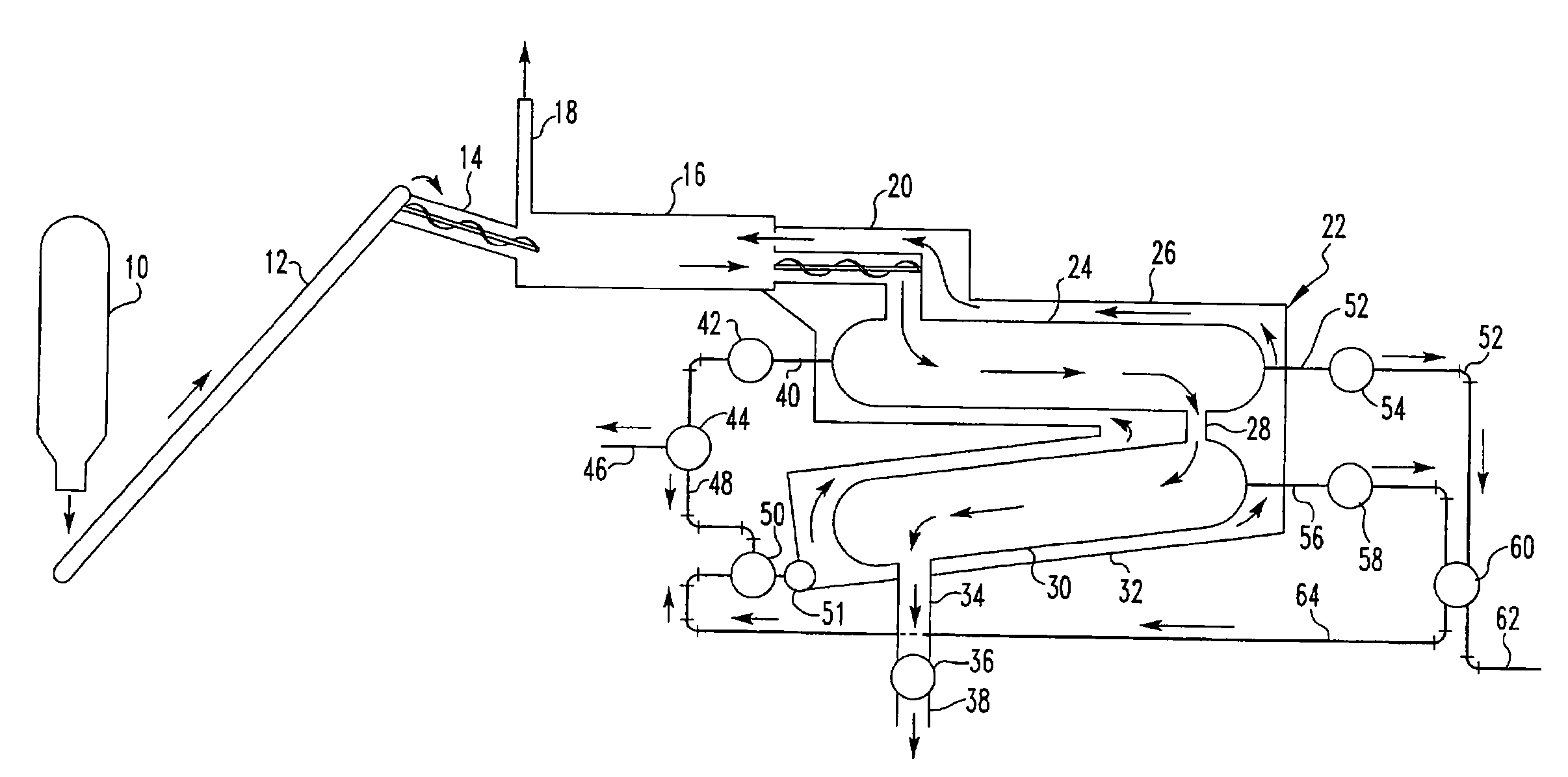Pyrolytic process and apparatus for producing enhanced amounts of aromatc compounds
a technology of aromatc compounds and pyrolysis process, which is applied in the direction of separation processes, vapor condensation, charging devices, etc., can solve the problems of severe conditions used
- Summary
- Abstract
- Description
- Claims
- Application Information
AI Technical Summary
Benefits of technology
Problems solved by technology
Method used
Image
Examples
example 1
[0058]A 50 / 50 (by weight) blend of cis-polyisoprene (Goodyear Natysyn), containing 96% (by weight) plus of synthetic cis-1,4-polyisoprene, and beads of polystyrene commercial grade clear were added to the various reactors.
[0059]Reactor 1 was a 24 inch by a 2 inch diameter pipe SCH 40 of 304 stainless steel which was capped at the ends. The reactor was heated with a propane burner having a flame temperature of approximately 1,800° F. with a burner size of approximately 24 inches long and 2 inches in width. The reactor contained one pound of the blend and was heated at the rate of 41,000 btu's per pound per hour. The heating time with regard to exhaustive pyrolysis was approximately 30 minutes.
[0060]Reactor 2 was a 36 inch by 4 inch diameter pipe containing two 150 pound flanges on the ends thereof covered by 150 pound blind flanges. The reactor contained 10 pounds of the blend and was heated with the same burner as reactor 1, resulting in a heated rate of 4,100 btu's per pound charge...
example 2
[0068]Various amounts of scrap tire rubber as set forth in Table II were added to the various reactors. The reactor size, heating temperatures, input rate of heat, and the like are the same as set forth above with regard to Example 1. Also, the pyrolysis was carried out in the same manner as set forth in Example 1 with the only difference being that instead of a blend of polystryene and cis-1,4-polyisoprene, scrap rubber tires were utilized to charge the reactors. The results are set forth in Table II.
TABLE IITire PyrolysisReactorIIIIIIPercent ofPyrozylate by Wt.Ethyl Benzene5.910.010.0Benzonitrile1.42.82.0(1-methylethenyl) Benzene2.51.02.9Styrene10.15.16.3Xylenes1.62.04.3Propyl Benzene1.21.61.4Ethylmethyl Benzene2.03.74.2Trimethyl Benzene1.92.13.42-ethyl-1,3-Dimethyl Benzene0.91.51.3Benzene5.96.56.1Toluene11.114.313.54-Methyl-1-Pentene0.80.00.01-Butene1.90.30.33-Methyl-1-Butene0.80.00.02-Pentene1.10.60.7Cyclopentene0.40.40.53-Methyl-1,3-Butadiene3.81.81.63,3 Dimethyl Cyclobutene0.9...
PUM
| Property | Measurement | Unit |
|---|---|---|
| internal volume | aaaaa | aaaaa |
| pressure | aaaaa | aaaaa |
| temperature | aaaaa | aaaaa |
Abstract
Description
Claims
Application Information
 Login to View More
Login to View More - R&D
- Intellectual Property
- Life Sciences
- Materials
- Tech Scout
- Unparalleled Data Quality
- Higher Quality Content
- 60% Fewer Hallucinations
Browse by: Latest US Patents, China's latest patents, Technical Efficacy Thesaurus, Application Domain, Technology Topic, Popular Technical Reports.
© 2025 PatSnap. All rights reserved.Legal|Privacy policy|Modern Slavery Act Transparency Statement|Sitemap|About US| Contact US: help@patsnap.com


